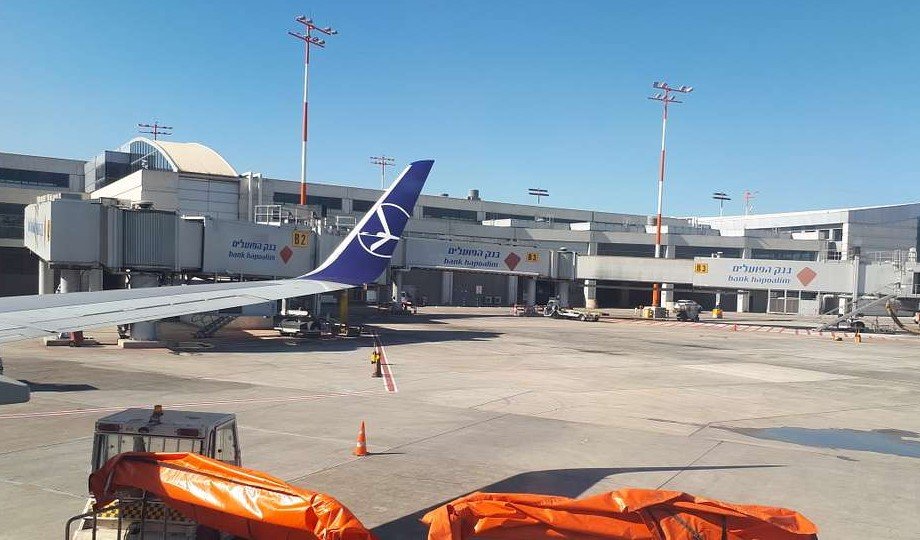Germany’s flagship carrier is planning a cautious comeback to Israel, marking a key turning point after weeks of tension in the skies. Lufthansa says it will begin flying to Tel Aviv again from the start of next month.
Europe’s Biggest Airline Group Eyes a Return to the Israeli Skies
After nearly seven weeks of suspended service, Lufthansa Group said on Monday it’s preparing to bring planes back to Ben Gurion Airport, starting August 1. The move comes as the region starts to stabilize following the intense but short war between Iran and Israel in June.
Lufthansa, along with its subsidiaries — SWISS, Austrian Airlines, Brussels Airlines, and Eurowings — had pulled the plug on flights mid-June when Israel shut its airspace in response to incoming missile strikes. Since then, it’s been a waiting game.
But now, the European Union’s Aviation Safety Agency (EASA) has given the green light — lifting a high-risk advisory that had warned pilots not to fly over Israel. That was enough for Lufthansa to start plotting its return.
One sentence says it all: war forced them out, but confidence is pulling them back in.
SWISS to Stay Grounded Through October
While most carriers under the Lufthansa umbrella are lining up for a return, SWISS won’t be rejoining the skies over Tel Aviv just yet.
The Zurich-based airline is holding back. A company spokesperson said SWISS flights will remain suspended through October 25. Officially, the reason is “operational,” though insiders hint that crew concerns and internal planning delays also played a role.

A one-sentence break here: Tel Aviv’s tarmac will have to wait a little longer for the white-and-red tailfin of SWISS.
The decision echoes similar hesitations across parts of the aviation industry. Not everyone’s ready to act like nothing happened.
EASA Withdraws ‘High-Risk’ Label After War Cooldown
Lufthansa’s timing wasn’t accidental. The announcement came on the same day the EASA officially scrapped its “high-risk” warning for Israeli airspace. That advisory had been issued back on June 13 — the same day Iran began firing waves of missiles into Israeli territory.
In its latest statement, EASA said the warning no longer stands. It was softened last week, and now it’s gone completely.
That shift from cautious to clear skies played a huge role in Lufthansa’s go-ahead. But the European watchdog isn’t easing up on Iran.
One small sentence: air over Israel is safer, but Iran remains in the no-fly zone.
A Region Still on Edge
The war may be over — for now — but the damage lingers.
Over the course of 12 days, Iran launched dozens of missile attacks, hitting both military and residential zones. Twenty-four civilians were killed. Another 60 were wounded. The images of apartment blocks with their sides ripped open by explosions are still fresh in people’s minds.
Israel responded with targeted airstrikes. But while the battlefield has cooled, there’s a nervous calm in the air. Intelligence officials aren’t ruling out future clashes. And airline executives know that, too.
This wasn’t just a conflict on the ground. It disrupted a whole air corridor.
The Bigger Picture: Lufthansa’s Tel Aviv Route Is More Than Just a Flight
Tel Aviv isn’t just another airport stop for Lufthansa — it’s a key commercial hub and a high-yield destination.
In pre-war times, Lufthansa flew multiple daily routes into Israel from Frankfurt and Munich. Business travelers, tech executives, expats — they all packed those planes.
To understand what’s at stake, here’s a quick snapshot from pre-war schedules:
| Airline | Weekly Flights to TLV (Pre-War) | Current Status |
|---|---|---|
| Lufthansa (mainline) | 20 | Resuming Aug 1 |
| SWISS | 14 | Suspended till Oct 25 |
| Austrian Airlines | 18 | Set to resume |
| Brussels Airlines | 10 | Set to resume |
| Eurowings | 6 | Pending schedule |
In just a few lines, you can see how vital this route was — and how its disruption left a hole in both tourism and business travel flows between Europe and Israel.
Tel Aviv’s Airspace: Rebuilding Trust After Missiles
Israel’s airspace is usually considered one of the safest and most tightly controlled in the world. But even the Iron Dome system couldn’t offer full reassurance in June, when air raid sirens echoed in the night and airport runways temporarily went dark.
Ben Gurion Airport was effectively shut down for civilian use. Some international flights were rerouted to Eilat or even Cyprus. Others were cancelled entirely.
For airlines like Lufthansa, trust has to be rebuilt.
One sentence here: if the skies stay quiet, the bookings will come back.
What Travelers Can Expect in August
The return of Lufthansa flights doesn’t mean a full-scale schedule right away. The airline is expected to resume with limited frequencies, gradually scaling up based on security assessments and passenger demand.
Bookings for Tel Aviv will reopen in mid-July, with flexible change policies still in place for affected routes. Travelers are being advised to check with airlines regularly as schedules remain fluid.
Here’s what’s likely to happen first:
-
Frankfurt–Tel Aviv and Munich–Tel Aviv routes resume with reduced frequencies.
-
Austrian Airlines expected to restart Vienna–Tel Aviv flights.
-
Brussels Airlines and Eurowings are still finalizing details.
But there’s one thing all airlines are waiting on: quiet skies.
